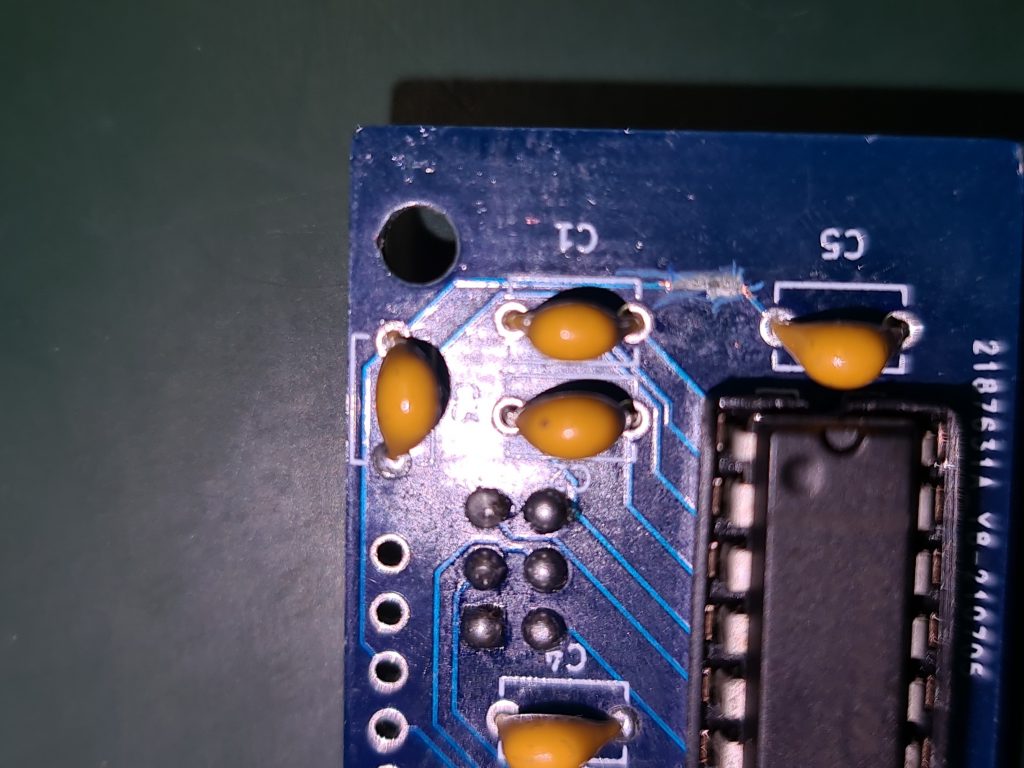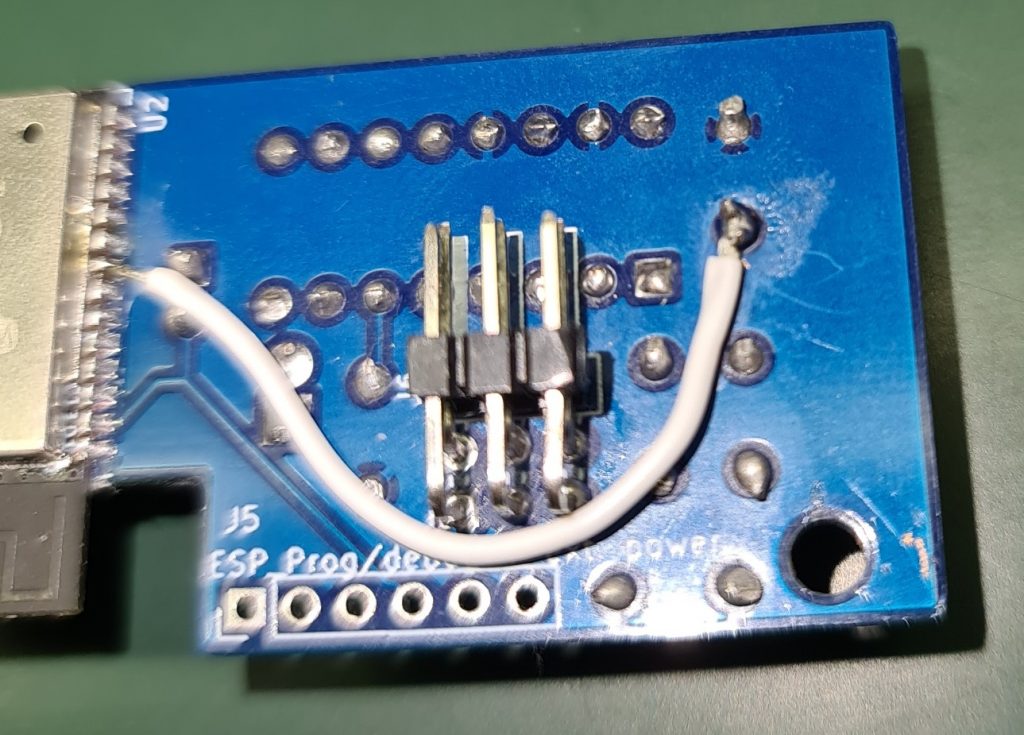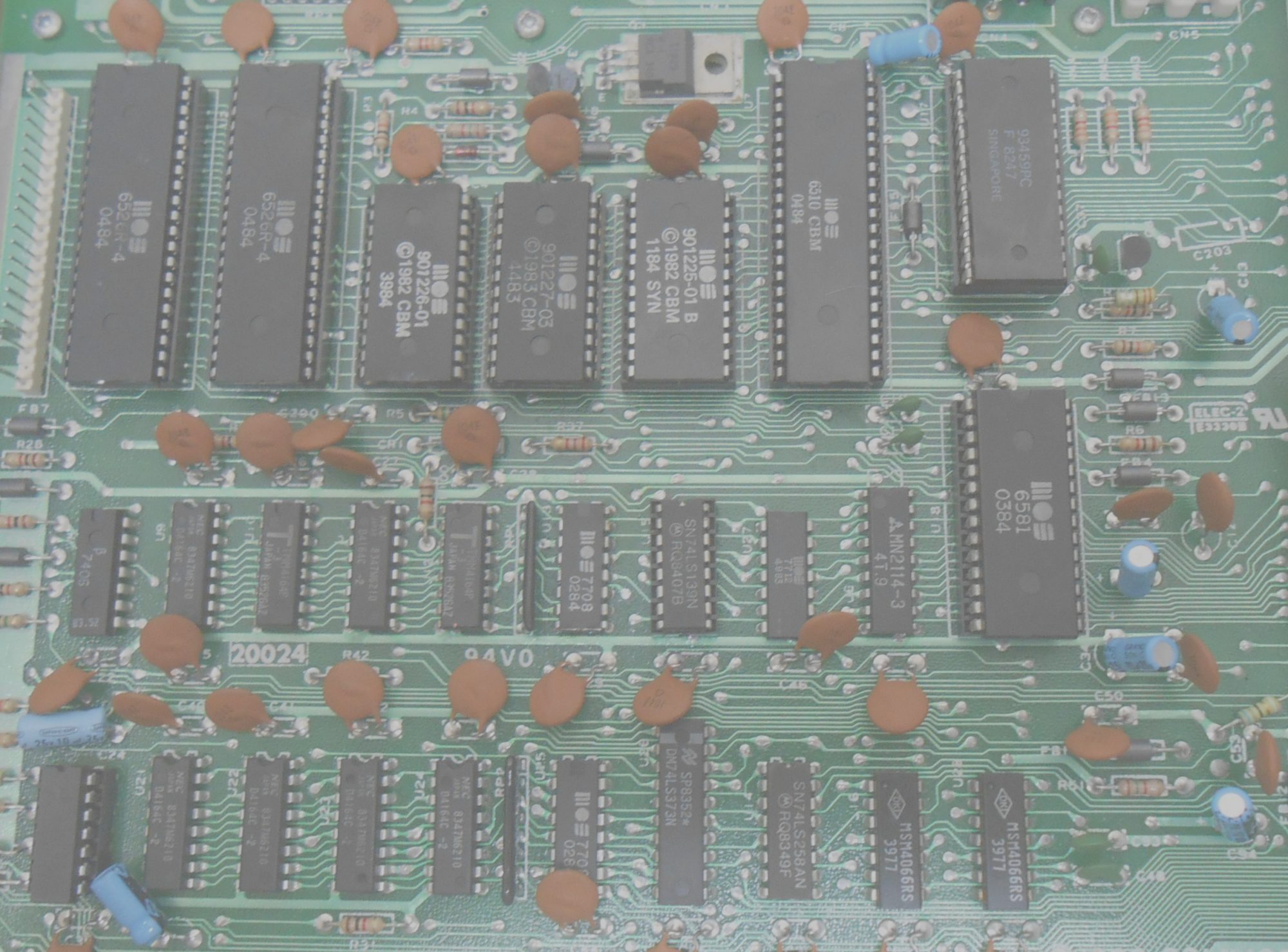Well, we warned you that software guys like us tend to come up with software solutions – even for hardware problems.
As expected, no electronic engineers reached out to us with a solution for our (probably fake) MAX3232 issues, so we had to come up with a solution ourselves…
That is off cause ok – and with the help of a cut PCB trace:

… and a bodge wire:

… it seems we can persuade the MAX3232’s to play along.
This is off cause a temporary solution to test this fix – we need a new PCB prototype version if this works.
Note: You will find others struggling with similar MAX232/3232 issues on the Internet. Some are able to solve it with larger decoupling capacitors and some with resisters on the power pin – but that did not work for us.
Our implementation is simply adding control of the power to the MAX3232 through software. When it mis-behaves we punish it by turning it off for a while. Then back on until it behaves…
Note: the max current a ESP32 digital pin can supply seems to be around 40mA and the max consumption of a MAX3232 is around 1mA. So we should be safe doing this “hack”…
If you are an electronic engineer you are probably finding this solution fun – but it seems to be working :-).
While we are still waiting for the MEP Protocol specification to be released (and our NDA to be lifted), we’ll try to keep your entertained with more blog entries.
Stay tuned to www.dabbler.dk…

Like your software hack !
Thanks 🙂
Another option that I was considering, is to install a Wiser Powertag 3P on my incoming energy. It’s not reading data off the meter, but it’s measuring the same power, so I guess the result should be the same?
I already have some on other parts of my electrical installation, and when asked, my electrician said it should be no problem to install it there as well.
As a follow-up to my previous comment, as I guess people here are into open solutions.
Wiser Powertag is not open. It requires their bridge, which in turn uploads data to the cloud which is accessible from their app.
The bridge was previously hacked to allow local access to data, but it was recently patched with a firmware update.
However, there’s still hope, because the Powertags communicate with Zigbee to the bridge. Strides are being made to connect them directly to Zigbee2Mqtt. This would make the Wiser bridge obsolete, and give complete local access to data.
For anyone interested in that path, progress can be followed here: https://github.com/Koenkk/zigbee2mqtt/issues/7975
Hi René
And thank you for your comments.
Alternative solutions are more than welcome and the approach you describe with the Wiser solution might be a better fit for someone.
Also I believe this solution is independent of the meter, so it will continue to work even if/when the grid company changes the meter at some point in the future.
Another tinkering solutions which is also meter independent would be to use clamp sensors / current transformers like the SCT013 – see:
https://www.ebay.com/itm/363636511697?hash=item54aa6cd3d1:g:VOAAAOSwr81UMgDo
https://www.ebay.com/itm/133077015640?hash=item1efc021c58:g:-B0AAOSwd49bzaMS
We mentioned that briefly at our Sommerhack 2021 session (you can still find the slides in the Program section).
Anyway – thank you for taking the time to describe the solution and supplying the github link.
Clamp sensors like that might not fit in all installations, and even if they do, make it quite a bit more clunky (I have a few in my installation). Also, from my understanding – you need a devices that can handle 3-phase installation, as it’s not as simply as just measuring all 3 wires. I could be wrong, it’s just what I’ve been told. So for that to be feasible, a Shelly 3 EM could be a way to go.
Hi René
Thank you for your comment.
Yes, you are absolutely right about them beeing clunky.
I’m not an electrical engineer, but my logic says that it should be somehow possible to combine the measurement of 4 clamps (3 phases + the null return) and then calculate the actual consumption. But I’m also not 100% sure :-).
Anyway, my guess is also that the clamp method cannot be that precise. At least compared with what we get from the Echelon meter (accumulated consumption and production in watt/h and current consumption and production in mA and Watt etc.)